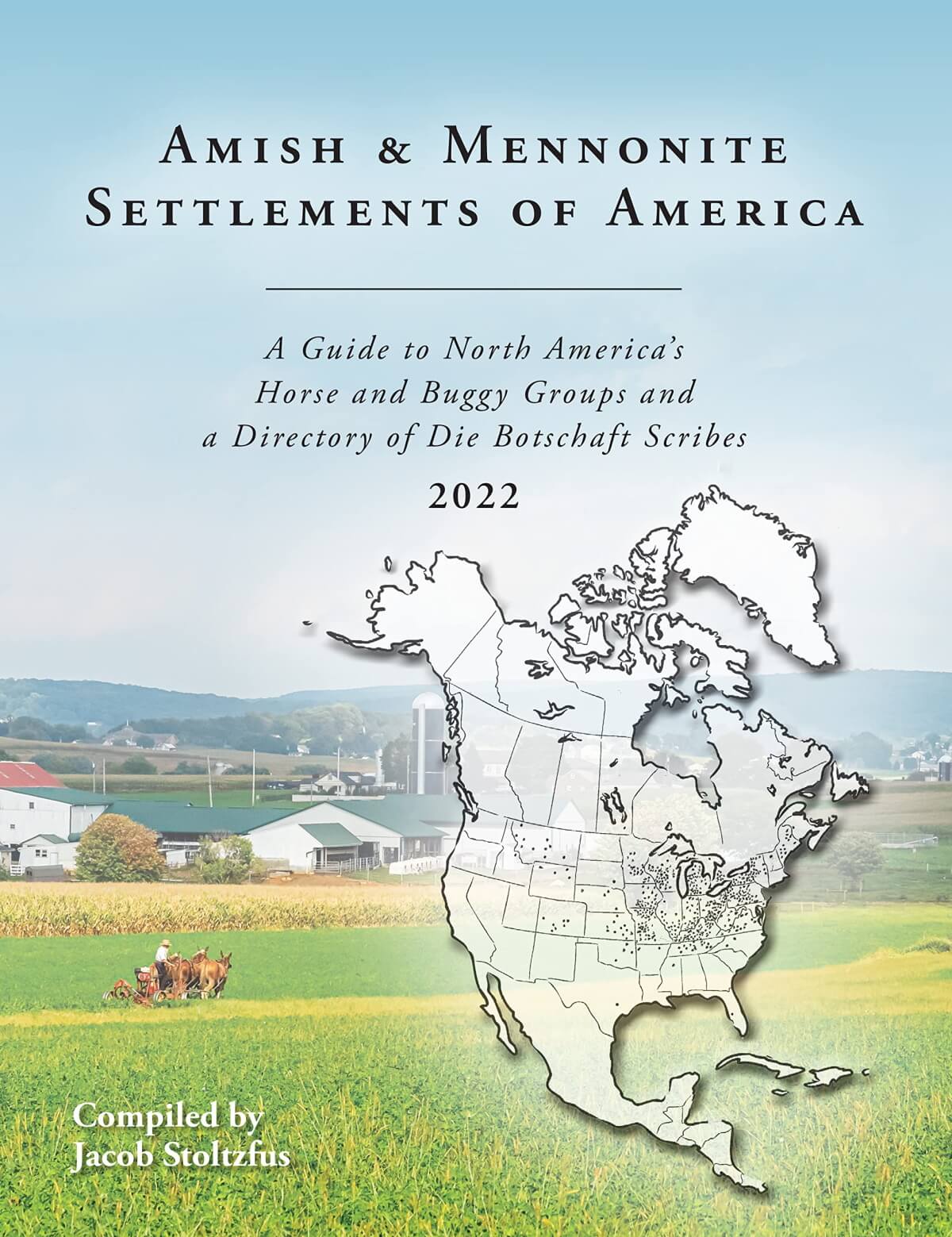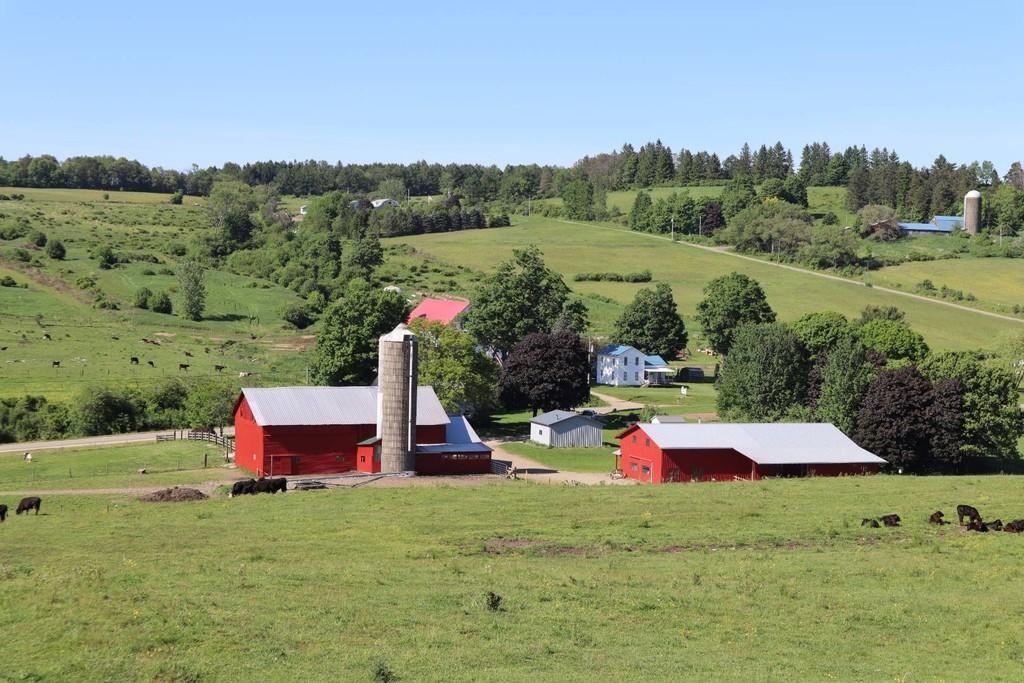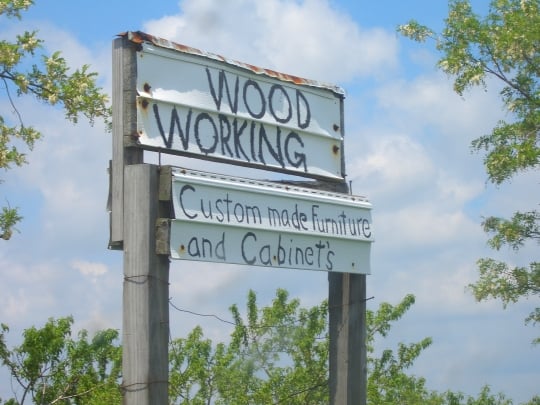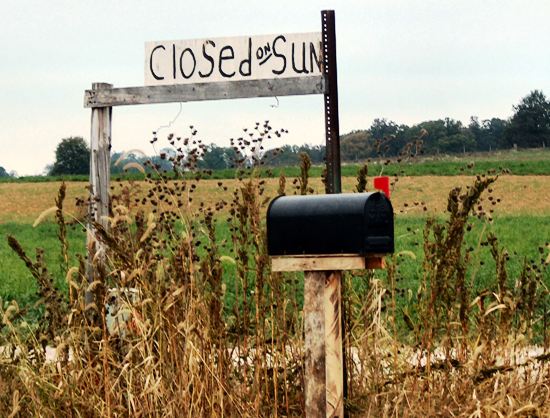Five Lesser-Known But Large-ish Amish Communities
Large Amish communities and those with a tourist focus (often one and the same) tend to get the most attention. Places like Holmes County, Ohio, Arthur, Illinois, and Lancaster County, Pennsylvania are both well-known and frequently-visited.
There are also a number of sizeable Amish communities out there that are overlooked. They are more off-the-beaten path, less touristy for whatever reason, or overshadowed by neighboring communities.
These communities have different characters and backgrounds. Some are plainer and others less so. As in most Amish communities of some size, you’ll find a variety of Amish-run businesses in these places. Most will advertise their presence by a simple roadside sign, and non-Amish people are welcome in most cases to visit.

The following five communities all have at least 2,000 Amish people living in them (meaning they are each around 15-20 church districts in size). There are of course others in that size range, but this is a sample.
Steven Nolt notes in A History of the Amish that “By the close of the 1800s, the Old Orders [Amish] who continued to worship in private homes, maintain traditionally simple clothing patterns, and rigorous church discipline numbered only about 5,000” (p. 209). Remarkably, the Old Order Amish have grown and flourished since that time to such a degree that if you took just two of the communities listed below, you would have roughly the equivalent of the entire Amish population in 1900.
Below I share a little bit about each of these communities, leaning in large part on a new book called Amish & Mennonite Settlements of America: A Guide to North America’s Horse and Buggy Groups and a Directory of Die Botschaft Scribes.

As the title suggests, this impressive book gives the background on the continent’s horse-and-buggy Amish & Mennonite communities as well as other interesting information such as related settlements. The compiler, Jacob Stoltzfus, had his work cut out for him and it appears he did a great job. He uses information contributed by Die Botschaft scribes to give each community’s background.
Five Sizeable but Lesser-known Amish Settlements
1. Hopkinsville, KY – This community, which got its start in 1989, was the first in the Bluegrass State settled by Amish from Lancaster County, PA. The area scribe notes that “This community started as a farming community. Now we have a lot of carpenter crews, some produce farmers, and still a few dairy farmers. We are scattered out in four different counties – Christian, Todd, Trigg, and Caldwell County. We are spread out fifty miles east to west and almost the same distance north to south.”
That last bit is pretty remarkable as it suggests quite a large area. By comparison, Lancaster County itself at it’s “tallest” point is not quite 40 miles across north-to-south. Of the four counties, Amish are settled more in two of them – Christian and Todd.
2. Conewango Valley, NY – The Empire State’s oldest Amish community was settled in 1949. Noah L. Shetler of Enon Valley, PA bought seven farms in the area and sold six to other Amish in the following year. Amish came here from communities including New Wilmington, PA and Wayne County, OH.

Today the community has 17 church districts and over 2,500 Amish people. The description notes that “Land is mostly rolling but also some flat land. Land is not expensive, but taxes are high. There is a wide variety of things done to make a living, with dairy and produce farming, sawmilling, carpentry, wood and steel shops probably on top of the list. In the 1960s a cheese factory was built and later a produce auction.” I can add one more business you’ll find in this community – an Amish-run wooden toy shop.
3. Troutville, PA – These Amish originate from another Pennsylvania Amish community that could conceivably find itself on this list – that at Smicksburg. Amish arrived in the Troutville area (Clearfield County) over a half-century ago (1971). The place today has sixteen church districts.
The local scribe relates a common story in many Amish settlements: “In early days, many were farmers. Now that is a thing of the past. Today most work in construction. Also a few have sawmills or home businesses. The farmers are spread out in an area ten by twenty-five miles, from Punxsatawny to Dubois of Clearfield and Jefferson counties.” As in other places, dairy farming now makes up a smaller proportion of Amish occupations here than it once did. The Troutville settlement has seeded daughter communities in six states, including Tennessee, New York, and Montana.
4. Lodi, OH – This community lies a solid stone’s throw from one of those places I described in the opening paragraph – the well-known settlement in the Holmes County area, the second-largest of them all. At least in part for that reason it is overlooked, but it is one of the largest Swartzentruber Amish communities. It is also referred to by the name of local village “Homerville”, and we learn from the book that it today occupies area in Medina, Ashland, Wayne, and Lorain counties.

As to how the Amish make a living: “Up to the 1990s dairy farms and sawmills were the main occupations. Today only a handful of dairy farmers left and most of the sawmills are gone. Many are now produce farming with a thriving produce auction at Homerville. There are also a good number growing for the wholesale market. Also, twenty to twenty-five cabinet shops.”
The shift from dairy to produce I think is a pretty common one for Swartzentruber Amish, who for their technological restrictions limiting dairy farming have found more attractive opportunities in growing tomatoes, cucumbers, peppers, and the like.
5. Kingston, WI – Finally we come to the community at Kingston, one of the relatively few Amish communities emerging from the large Elkhart-LaGrange County, Indiana settlement. This settlement came about in 1977, founded by families with a common motivation – finding accessible farmland.
The scribe notes that the community today has fifteen church districts, sixteen parochial schools (in Amish communities, the number of schools is often, but not always, similar to the number of church districts), and “one special needs workshop.” It’s unclear to me by the term “workshop” whether that is for standard educational purposes or something more like vocational training. Amish communities typically provide for students with special needs in a variety of ways.
Looking again at occupations, the scribe explains that “The first twenty years most were dairy farmers. Today about thirty to forty percent of the families make a living from some sort of farming, dairy, beef, sheep, chickens, produce, or greenhouses. A produce auction is operated from April to October. The milk goes in cans to the cheese factory operated by the Amish. There are also numerous cabinet shops and construction crews.”
Other communities that might fit on this list include Munfordville, KY, Spartansburg, PA, and Cashton, WI. Happy to hear about any others you might add here.








I would add Daviess County, Indiana. The book source you mentioned said Daviess County had no daughter settlements but in 2020 several families left Daviess County to begin a new settlement in Clay City, Indiana. The Young Center lists Daviess County as having 35 districts, with an Amish population of 5,760. I have been to the settlement many times, but not since 2019. At that time, I would say the settlement was not nearly as commercialized as some its size, except for the Gasthof Amish Village in Montgomery, Ind. Even though Dinky’s Auction is in the center of the community and attracts a thousand or two people almost every Friday night, it definitely has an Amish feel to it. It has a “tourist focus” with people coming to the auction from several states, but it’s definitely a different type of tourist crowd than you see in the huge Amish settlements (Lancaster, Holmes County, Elkhart/LaGrange, etc).
When I was there way back in 2004, it was probably closer in size to the ones mentioned here, I would guess 3,000 people or fewer. Would love to re-visit that one.
NY Amish
There’s the Clymer Amish, of Chautauqua County, NY, in the SW corner of the state. Many live in the area between Clymer and Sherman. They’re a bit more permissive-the first year a couple is setting up, they can make limited use of electricity. Businesses can use phones and computers. Propane is used to fuel stoves for cooking, and engines for businesses. They also believe in allowing their horses a lot of pasture time. When you drive down the road, any time of day, you’ll see horses in the pastures, grazing, scratching each other’s backs, lying down for a nap, or playing. I know many Amish send horses past work to kill auctions, but the way these Amish seem to allow their horses so much pasture time, makes me wonder if they just keep retired horses.
Glad you added that one Karen, and interesting observation about the horses.
more information on WI communities
Great post, Erik, and I agree that Jacob Stoltzfus’s new book is a fantastic reference.
A couple of follow-ups re: Wisconsin. The Cashton settlement is the largest in the state, with an estimated population of 2,495, just ahead of the Kingston-Dalton community, which has about 2,240 residents. (The numbers are from the 2022 estimates on the Young Center’s Amish studies website.) The workshop mentioned in Stoltzfus’s description of the Kingston-Dalton settlement employs several special needs youth and adults who perform piecework for local businesses, which is a great source of activity and income for them.
Great addition here Mark, thanks!